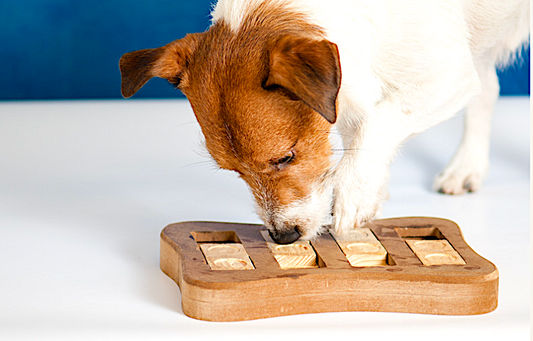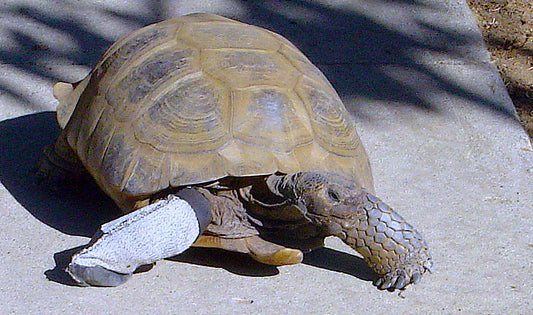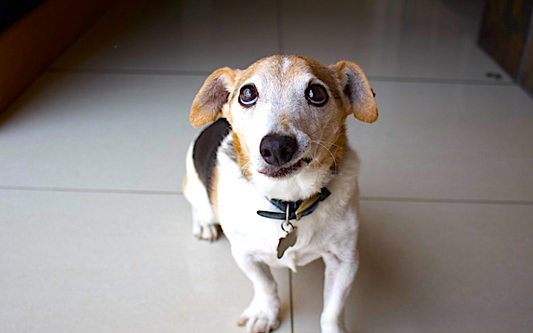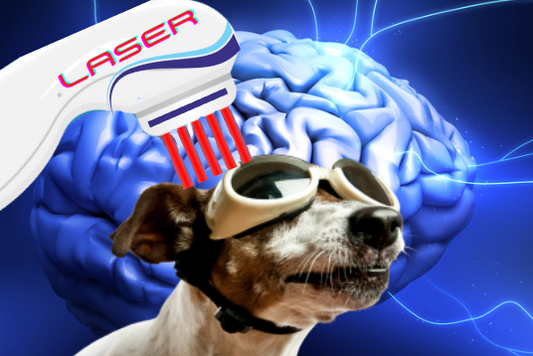Persistent back pain in your patient? Try Kiiko Matsuomoto Style, a modern twist on an ancient Japanese technique.
Often in an initial appointment, new clients recount how their companion responded well to treatment for a specific problem (ranging from osteoarthritis to bladder stones), but they still seem “off”. Clinical parameters like range of motion are improved, but elusive discomfort lingers. Often I’ll note an exaggerated Panniculus reflex (especially over the mid-back), regional or multiple sights of tight skin that is uncomfortable when touched down the spine, and tension, taught bands, and spasm in grouped muscles. If the problem is hard to localize and patients are too uncomfortable to examine without creating terror (or in cats, fury) what’s one to do? I’ve found an incredibly well-tolerated and effective approach for this clinical presentation to try – Kiiko Matsuomoto Style.
Kiiko Matsuomoto Style (or KMS) is a palpation-based acupuncture system developed by Kiiko Matsumoto that draws on her training with Japanese Masters and incorporates other systems. Japan, Korea, Taiwan, and China each have unique acupuncture styles that originated from Chinese Medicine but evolved into distinct forms, reflecting the culture and history of the region. Japanese style relies heavily on palpation, prioritizes patient comfort, and utilizes fine needles with a shallow insertion. The needle guide tube commonly used today was invented in Japan during the Edo Period (17th–19th Centuries). With the emphasis on tactile skills, blind students were encouraged to become acupuncturists, and many of the great Japanese masters of acupuncture were blind. In fact, it’s estimated that 20–40% of acupuncturists in contemporary Japan are blind.
In Kiiko Matsuomoto Style, the order of examination and treatment are precise and begins with abdominal palpation (Hara Diagnosis) and then to other regions. In each area, specific acupuncture points called “reflex zones” are palpated in sequence and when any abnormality (pressure, pain, taut bands, etc.) is felt, digital pressure is applied to a specific acupuncture release point(s) using the practitioner’s other hand. The finger pressing the release point is moved very slightly in different orientations until the abnormality disappears. There is great overlap with many of the KMS concepts and current research on the connection of myofascial planes.
I frequently use the “I-Hi-Kon” treatment from this system, named for the abbreviated first letters of the Japanese acupoints used. Singly, each point serves as a release for a specific location on the spine, and together they can treat the entire back (see image below):
- Bladder 40 (BL40 “I-Chu”) is in the center of the popliteal crease behind the stifle (red circle). It is the release point for the spine at the level of the L2-3 intervertebral space (red circle).
- Bladder 60 (BL60 “Kon-Ron”) is in the depression between the lateral malleolus and calcaneous, level with the tip of the lateral malleolus (blue circle). It is the release point for the occiput (blue circle).
- Bladder 58 (BL58 “Hi-Yo”) is found halfway between a line drawn between BL40 and BL60 (green circle). It is a release for the T7-8 intervertebral space (green circle).

The I-Hi-Kon treatment can be applied in many ways. If there is discomfort or twitching along the back and the patient is reluctant to let you work on the area directly, you can use acupuncture, LASER, moxibustion, or massage to release discomfort. In Kiiko style, palpate along the back and when an area of pain or dysfunction is found, use the other hand to apply digital pressure on the ipsilateral I-Hi-Kon point with the closest reflection to the abnormal area. Continue palpation of the back as you slightly change the finger orientation on the release point until palpation changes noted resolve. Needle, LASER, or moxibustion the location on the I-Hi-Kon line that normalizes palpation, and then treat the back using your preferred modality. If the abnormal area on palpation is caudal to L2-3, walk your digital pressure along that same Bladder line dorsally (nestled between the hamstring muscles) until you find the point that normalizes palpation. Treat the release point on the limb first and then treat the back.
There are myriad releases for other regions of the body in this system. It is well-tolerated, provides immediate feedback, and is supported by cutting edge science while maintaining its traditional roots.
Author: Cheryl A. Cross, DVM DACVP
Link: https://ivcjournal.com/kiiko-matsuomoto-style/
Select References
Kobayashi A. et al. History and progress of Japanese acupuncture. Evid Based Complement Alternat Med. 2010;7(3):359–365.
Krause F et al. Intermuscular force transmission along myofascial chains: a systematic review. J Anat 2016; 228(6):910-8.
Matsumoto K and Euler D. Kiiko Matsumoto’s Clinical Strategies: In the Spirit of Master Nagano, Vols. 1 and 2. Massachusetts: Kiiko Matsumoto International, 2008.
Wilke J et al. What Is Evidence-Based About Myofascial Chains: A Systematic Review. Arch Phys Med Rehabil. 2016 Mar;97(3):454-61.






